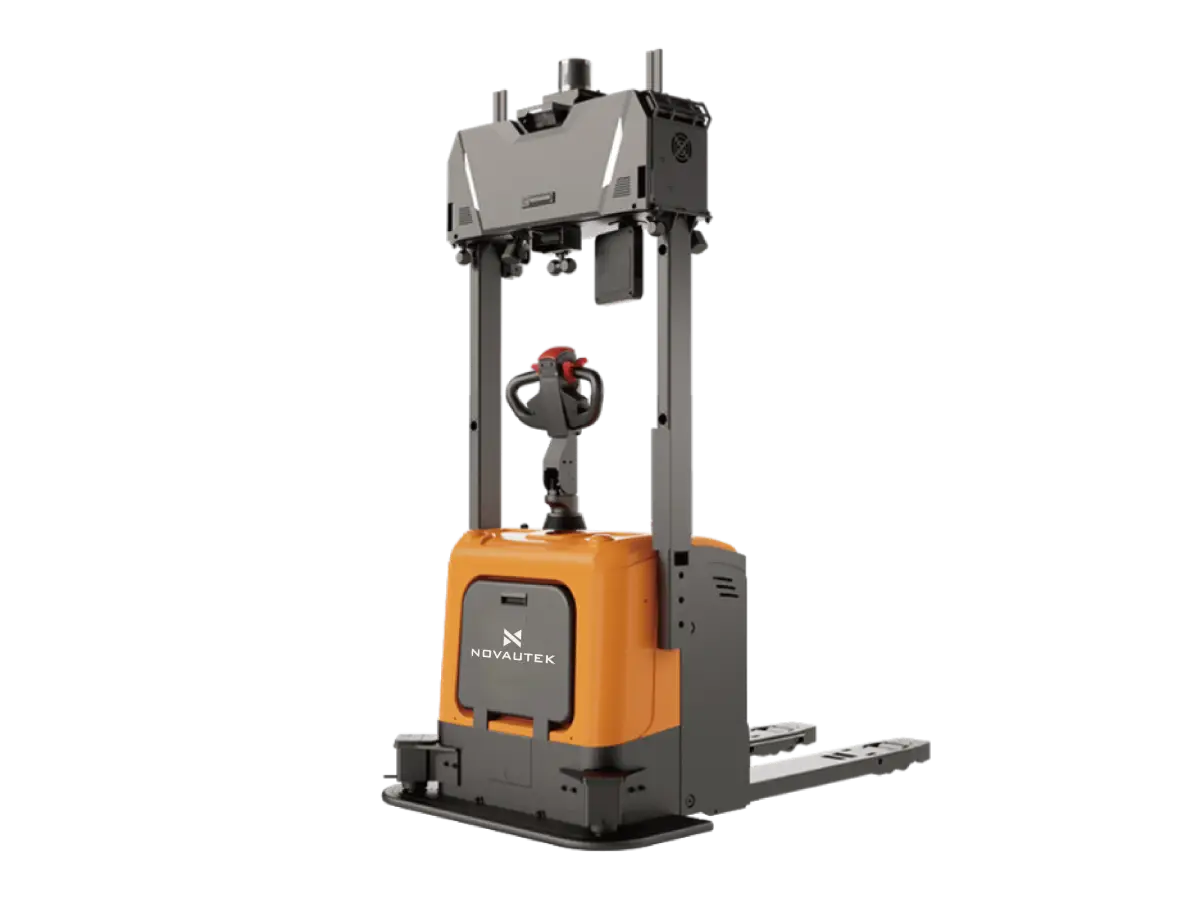The industrial landscape is experiencing a revolutionary transformation as autonomous robots reshape operational efficiency across manufacturing, warehousing, and logistics sectors. These sophisticated machines operate independently without human intervention, leveraging advanced artificial intelligence, machine learning algorithms, and sensor technologies to navigate complex environments and execute tasks with unprecedented precision. Organizations worldwide are recognizing that autonomous robots represent more than just technological advancement—they embody a strategic imperative for maintaining competitive advantage in an increasingly automated economy.
Modern autonomous robots incorporate sophisticated AI systems that enable real-time decision-making and adaptive behavior in dynamic environments. These systems process vast amounts of sensory data simultaneously, analyzing patterns and predicting optimal pathways for task completion. Machine learning algorithms continuously improve robot performance by learning from previous experiences, environmental interactions, and operational outcomes. The integration of neural networks allows robots to recognize objects, understand spatial relationships, and respond appropriately to unexpected obstacles or changes in their surroundings.
Deep learning architectures enable autonomous robots to perform complex cognitive functions traditionally requiring human intelligence. Computer vision systems powered by convolutional neural networks process visual information with remarkable accuracy, distinguishing between different objects, identifying potential hazards, and mapping three-dimensional spaces. Natural language processing capabilities allow certain autonomous robots to understand and respond to voice commands, facilitating seamless human-robot collaboration when necessary.
Comprehensive sensor suites form the foundation of autonomous robot functionality, providing critical environmental awareness and navigation capabilities. LiDAR systems generate detailed three-dimensional maps of surrounding areas, enabling precise obstacle detection and path planning even in low-light conditions. Ultrasonic sensors complement visual systems by detecting transparent or reflective surfaces that might challenge traditional cameras, ensuring comprehensive environmental monitoring.
GPS integration combined with inertial measurement units enables outdoor autonomous robots to maintain accurate positioning across large operational areas. Indoor navigation relies on simultaneous localization and mapping technologies that create real-time environmental maps while tracking robot position within those maps. These navigation systems work together to ensure autonomous robots can operate effectively in both controlled indoor environments and unpredictable outdoor settings.
Manufacturing facilities increasingly deploy autonomous robots to handle repetitive tasks, quality control inspections, and material handling operations. These robots operate continuously without fatigue, maintaining consistent performance levels that exceed human capabilities in terms of speed, accuracy, and endurance. Production lines benefit from reduced cycle times, improved product quality, and enhanced workplace safety as dangerous tasks are transferred from human workers to robotic systems.
Autonomous robots in manufacturing environments adapt to production schedule changes, product variations, and equipment modifications without extensive reprogramming. Their ability to communicate with other automated systems enables coordinated operations that optimize overall production efficiency. Quality control applications leverage computer vision and precision measurement capabilities to identify defects, ensure specifications compliance, and maintain consistent product standards.
Warehouse operations experience dramatic efficiency improvements through autonomous robot implementation, particularly in inventory management, order fulfillment, and material transportation. These robots navigate complex warehouse layouts independently, locating specific items, transporting goods between locations, and updating inventory records in real-time. The autonomous robots reduce human error in picking operations while accelerating order processing speeds significantly.
Logistics centers benefit from 24-hour operational capabilities as autonomous robots continue working during night shifts and peak demand periods without additional labor costs. These systems optimize route planning algorithms to minimize travel distances, reduce energy consumption, and maximize throughput. Integration with warehouse management systems enables seamless coordination between robotic operations and existing business processes.
Organizations implementing autonomous robots typically experience substantial cost reductions across multiple operational categories. Labor costs decrease as robots handle routine tasks previously requiring human workers, while operational consistency reduces waste, rework, and quality-related expenses. Energy efficiency improvements result from optimized movement patterns, reduced idle time, and intelligent power management systems.
Maintenance costs remain predictable through preventive maintenance schedules and diagnostic monitoring capabilities built into autonomous robot systems. These robots self-monitor component wear, predict maintenance requirements, and schedule service activities to minimize operational disruptions. The elimination of workplace injury risks associated with dangerous tasks further reduces insurance costs and potential liability exposure.
Autonomous robots demonstrate measurable productivity improvements through increased operational speed, extended working hours, and consistent performance levels. These systems operate at optimal efficiency regardless of external factors such as temperature, lighting conditions, or time of day. Production metrics show significant throughput increases when autonomous robots replace or supplement human workers in appropriate applications.
Quality metrics improve substantially as autonomous robots eliminate human error sources while maintaining precise operational parameters. Defect rates decrease, customer satisfaction increases, and overall operational excellence becomes more achievable through consistent robotic performance. Data collection capabilities provide detailed analytics for continuous process optimization and performance monitoring.

Successful autonomous robot deployment requires careful evaluation of existing infrastructure capabilities and potential modification requirements. Network connectivity, power distribution, and environmental conditions must support robotic operations while maintaining safety standards. Integration with existing enterprise systems ensures seamless data flow and operational coordination between robotic and human-operated processes.
Safety systems require comprehensive planning to protect human workers and equipment while enabling autonomous robot operations. Emergency stop mechanisms, collision avoidance systems, and clearly defined operational boundaries ensure safe coexistence between robots and human personnel. Regulatory compliance considerations must address industry-specific requirements and safety standards applicable to autonomous robotic systems.
Workforce transition planning becomes critical when implementing autonomous robots, requiring comprehensive training programs and change management strategies. Human workers need education about robotic capabilities, safety procedures, and new collaborative workflows. Effective change management addresses employee concerns while highlighting opportunities for skill development and career advancement in automated environments.
Ongoing support systems ensure smooth operations as teams adapt to working alongside autonomous robots. Technical training enables maintenance personnel to service robotic systems effectively, while operational training helps supervisors optimize robot utilization and performance. Clear communication about implementation timelines, job role changes, and expected outcomes helps organizations achieve successful autonomous robot adoption.

The autonomous robotics industry continues evolving rapidly with breakthrough technologies enhancing robot intelligence, adaptability, and operational capabilities. Edge computing integration enables faster decision-making by processing data locally rather than relying on cloud connectivity. Advanced materials and manufacturing techniques produce lighter, stronger, and more energy-efficient robotic platforms suitable for diverse applications.
Collaborative intelligence systems enable multiple autonomous robots to coordinate complex tasks, share environmental information, and optimize collective performance. These systems demonstrate emergent behaviors that exceed individual robot capabilities, opening new possibilities for large-scale automated operations. Quantum computing applications may eventually enhance autonomous robot problem-solving capabilities and enable more sophisticated artificial intelligence implementations.
Market analysis indicates accelerating adoption of autonomous robots across industries as costs decrease and capabilities improve. Small and medium enterprises increasingly access robotic automation through leasing programs, robot-as-a-service models, and more affordable entry-level systems. Industry partnerships between robotics manufacturers and software developers create integrated solutions addressing specific market needs.
Regulatory frameworks continue developing to support autonomous robot deployment while ensuring safety and ethical considerations. Standardization efforts promote interoperability between different robotic systems and simplify integration processes for end users. International collaboration on autonomous robotics research accelerates technological advancement and expands market opportunities globally.
Autonomous robots excel at repetitive, dangerous, or precision-critical tasks that benefit from consistent performance and continuous operation. Ideal applications include material handling, quality inspection, cleaning operations, surveillance, and inventory management. Tasks requiring complex decision-making, creative problem-solving, or extensive human interaction may still require human involvement or supervision.
Modern autonomous robots incorporate multiple safety systems including advanced sensors for obstacle detection, emergency stop capabilities, and programmable safety zones. They follow predetermined paths and protocols designed to avoid human workers while maintaining operational efficiency. Comprehensive safety training and clear operational procedures ensure human workers understand how to interact safely with autonomous robotic systems.
Most organizations see measurable returns within 12-24 months of autonomous robot implementation, depending on application complexity and operational scale. Factors affecting ROI include labor cost savings, productivity improvements, quality enhancements, and reduced operational expenses. Larger deployments often achieve faster payback periods due to economies of scale and more substantial operational improvements.
Yes, modern autonomous robots feature flexible programming capabilities and machine learning systems that enable adaptation to changing requirements. Software updates can modify operational parameters, add new capabilities, or optimize performance for different tasks. Advanced systems learn from experience and automatically adjust behaviors to improve efficiency and accommodate environmental changes or new operational challenges.

Copyright © 2024-2025 Novautek Autonomous Driving Limited, All rights reserved. Privacy policy